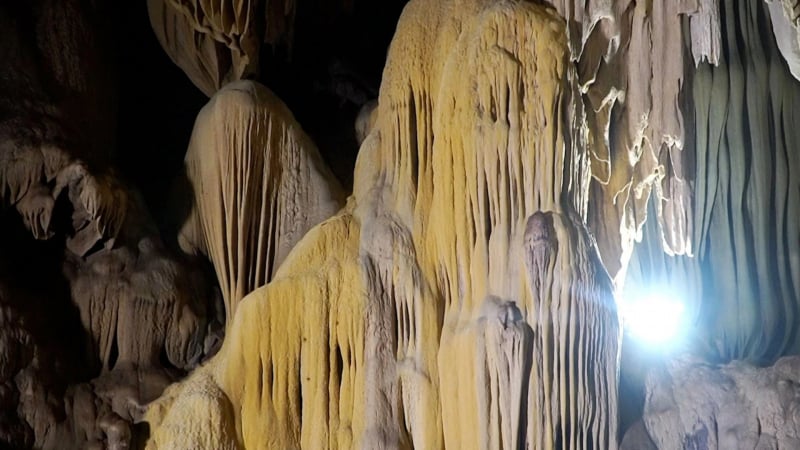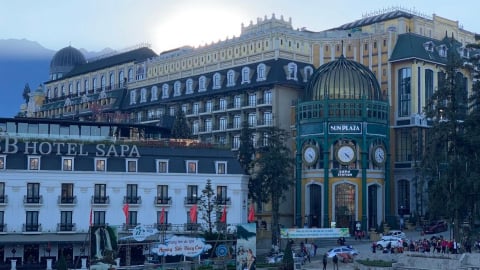"Wherever there is Vietnam, there is the Ancient Citadel."
Connecting the fire wreath to Khe Sanh
Medals are hard to come by, brick by brick.
Every inch of land, every second, every leaf and branch.
Here, the roar of bombs and bullets once echoed, and the footprints of the elite in the struggle for independence and freedom were imprinted, becoming a part of the nation's history. Therefore, the April 30th holiday is not only a commemorative day, but has become a great festival, a symbol of national spirit and the desire for peace. On this occasion, local people and tourists from all over the country join together in the jubilant atmosphere of meaningful events, cultural activities and traditional festivals, to remember the glorious past, pay tribute to those who fell for independence and freedom, and together look forward to a bright future.
Hien Luong Bridge - Aspiration for national unification
After the Geneva Agreement in 1954, Ben Hai River and Hien Luong Bridge became historical witnesses, directly bearing the pain of the country's division. The once peaceful river suddenly became a cruel boundary, dividing the two banks, dividing the children of the same bloodline. For 21 long years, many generations of our people had to live in the situation of "two halves of the country, two regions of the Fatherland", each person in a different direction, waiting for the day of reunification.
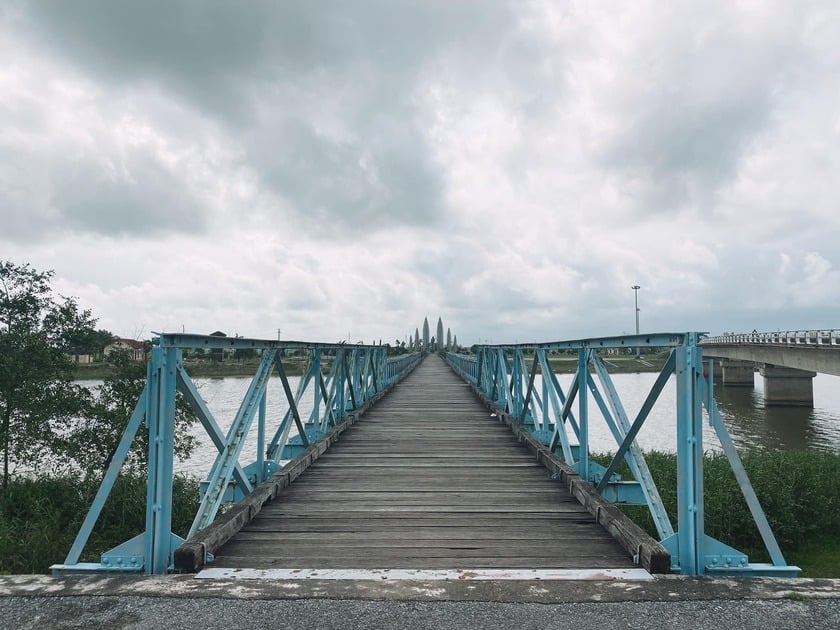
Hien Luong - Ben Hai is the place that witnessed the pain of division between the two regions.
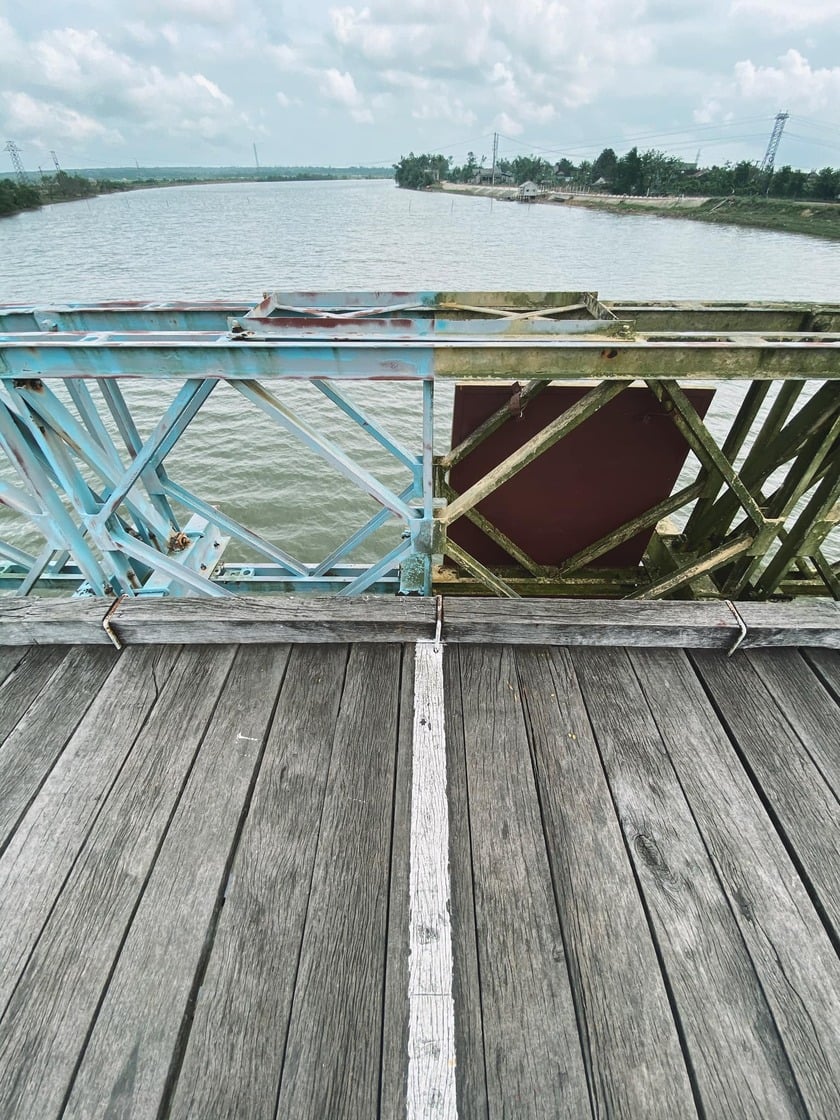
Crossing the Ben Hai River, Hien Luong Bridge is also the only bridge in the world with two different paint colors.
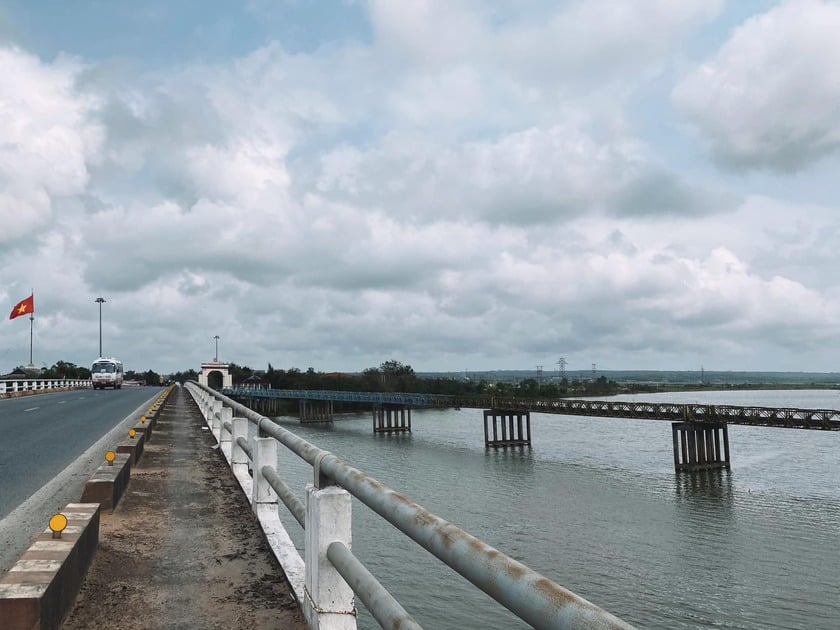
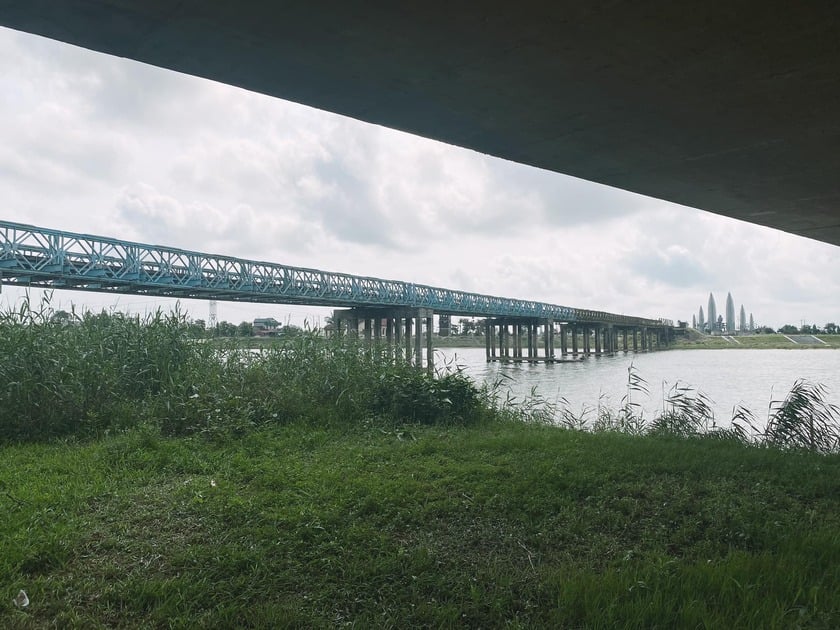
During those years, under the rain of bombs and bullets poured down by the enemy, Hien Luong Bridge was not only a bridge, but also a symbol of division, of pain and loss, but at the same time also a symbol of the nation's indomitable will.
And amidst all that pain, the red flag with yellow star still fluttered proudly above the border bridge, as a resolute affirmation of sacred sovereignty, of the burning desire for unification of the entire nation. That flag became a belief, a hope, a source of great spiritual strength, urging the people of the South to persevere in fighting, overcoming all hardships and sacrifices, achieving resounding feats of arms, contributing to the great victory of the spring of 1975, so that the country could be united, and North and South could reunite.

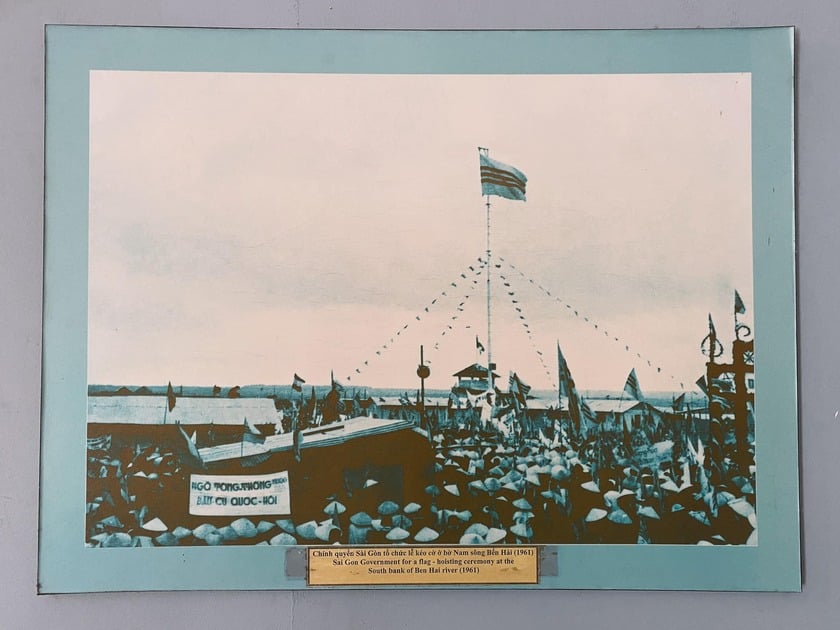
Quang Tri was the first locality in the South to be liberated, contributing to the overall victory of the nation, liberating the South and unifying the country. Therefore, every year, on April 30, Quang Tri province organizes the Unification Flag Raising Ceremony, attracting the attention of people inside and outside the province to participate. Many cultural and artistic activities and traditional boat racing competitions are also held to celebrate this great event.

The "border flagpole" on the north bank of Ben Hai River is also a historical witness to the "flag battle" on both sides of the border after the Geneva Agreement in 1954.

Vinh Moc Tunnels, an "unbelievable" underground miracle
About 13 km north of Hien Luong Bridge, visitors will come to a historical wonder, a living testament of war: Vinh Moc Tunnels. This magnificent structure is located in Vinh Thach Commune (now Kim Thach Commune), Vinh Linh District, Quang Tri Province. To create this tunnel system with a total length of up to 2.8 km, Vinh Linh people and local armed forces had to go through 18,000 arduous working days, digging and transporting more than 6,000 m3earth and rock under the rain of bombs and bullets of the enemy.
Every meter of tunnel, every underground room is soaked with sweat, tears and blood of the people here. Vinh Moc tunnel is not only a safe haven for about 60 families, but also an "impregnable fortress", where our army and people lived, fought, produced and hid revolutionary cadres.
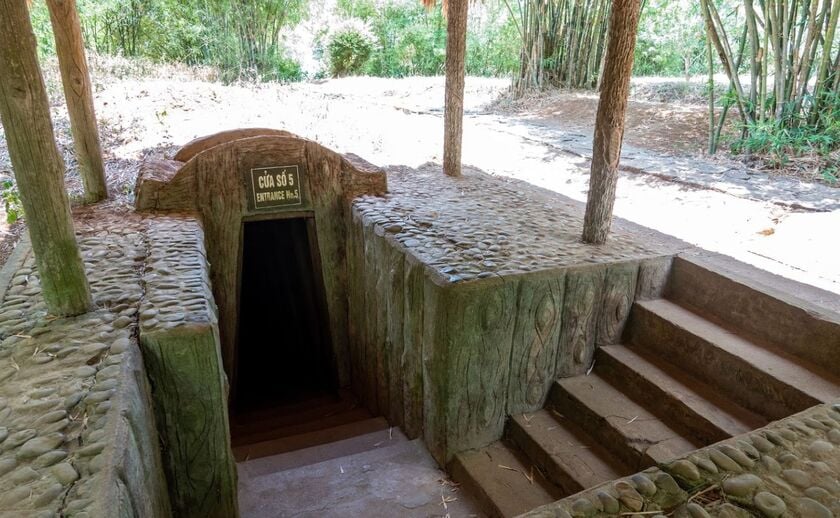

Today, Vinh Moc Tunnels has become an attractive destination for domestic and foreign tourists. This place not only attracts history lovers who want to learn about the Vietnam War, but is also an ideal destination for those who love to explore unique architectural works, legendary stories and profound cultural values. Coming to Vinh Moc Tunnels, visitors will witness the miracle of the work with their own eyes, hear touching stories about silent heroes, and deeply feel the indomitable spirit of the Vietnamese people.
Quang Tri Citadel, 81 heroic days and nights
Quang Tri Citadel, a special national monument of Vietnam, is not only a historical architectural work, but also a symbol of the indomitable spirit, strong will and desire for peace of the Vietnamese people. Located on the main road, right in the center of Quang Tri town, the citadel was built in the early 19th century with the original purpose of protecting Quang Tri town. However, over the course of history, this place has become a historical witness, marking important events, especially the extremely fierce and tragic 81-day and night battle in the Spring - Summer campaign of 1972.

The place to foster the spirit of uncompromising fighting spirit
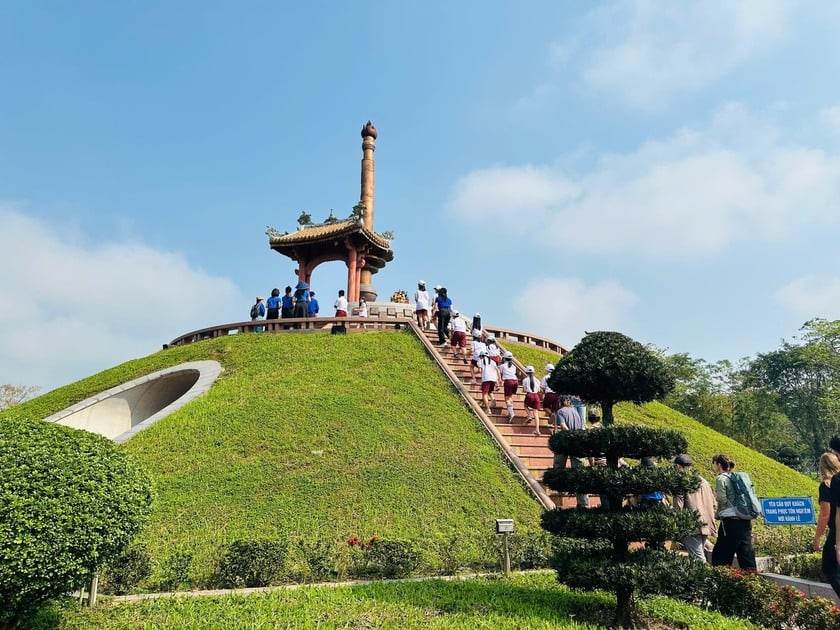
The victory of the Spring-Summer 1972 campaign, culminating in the battle to protect Quang Tri Citadel, not only liberated a large area of land but also had enormous strategic significance, shocking domestic and international public opinion, shaking the United States, extinguishing the US imperialists' intention to escalate the war, and contributing significantly to forcing them to resume negotiations and sign the Paris Agreement, opening the door to peace.

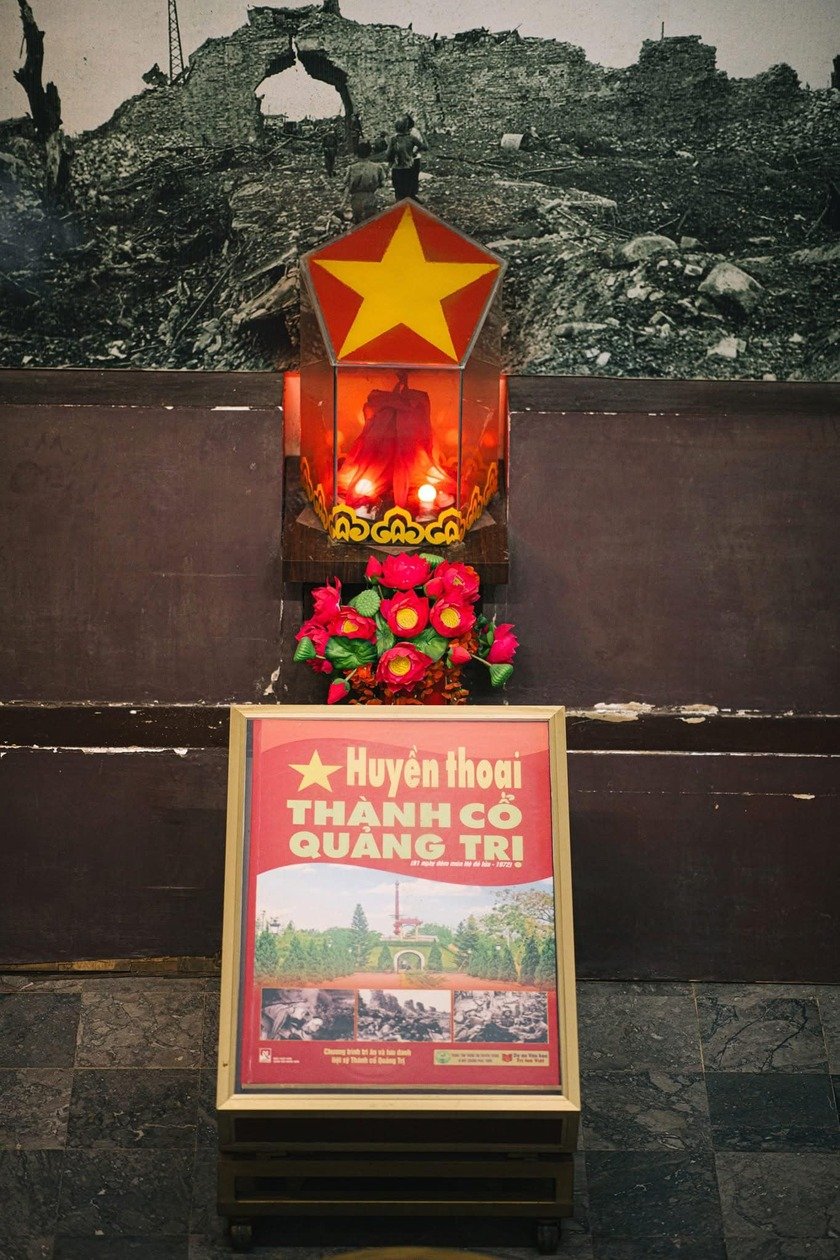
Today, Quang Tri Citadel is a historical relic with a strong spiritual significance, a sacred "red address", attracting tourists from all over the country and international friends to come and learn. Coming to Quang Tri Citadel, visitors not only admire a unique architectural work, but also relive heroic historical moments, listen to tragic stories about the nation's outstanding children, the young men and women of nineteen and twenty who put down their pens and put aside their dreams to take up arms and fight to liberate the Fatherland. Their noble sacrifices have added color to the nation's golden history, and Quang Tri Citadel will forever be a shining symbol of Vietnam's patriotism and desire for peace.
Truong Son Cemetery – the resting place of thousands of heroic martyrs
The cemetery is located on Ben Tat hill, next to Highway 15, in Vinh Truong commune, Gio Linh district, Quang Tri province, about 38km northwest of Dong Ha city. This place is considered the most massive, largest-scale and highly artistic gratitude work, solemnly and movingly expressing the deep remembrance, gratitude and secret honor of the entire nation for the beloved children in all regions of the Fatherland who did not spare their blood and bones for the cause of righteous struggle.
Truong Son Martyrs Cemetery has a total area of 140,000 m2, is the gathering place of 10,333 graves of martyrs who heroically sacrificed on the legendary Ho Chi Minh trail, during the resistance war against the US to save the country. Each grave here is a story of courage, sacrifice and indomitable spirit of the Vietnamese children who fell for the independence and freedom of the Fatherland. Coming to Truong Son Martyrs' Cemetery, visitors will be immersed in a solemn and emotional space, learning more about the heroic and tragic history of the nation, about the glorious battles and silent sacrifices.

This place is considered the most massive and largest gratitude project.
With all that, Quang Tri is a great destination for those who want to learn about history, explore natural beauty and experience the unique cultural values of Central Vietnam. If you are planning an upcoming trip, especially during the April 30 holiday, don't forget to put Quang Tri on the list of attractive destinations that you can't miss!







